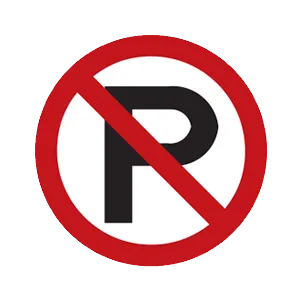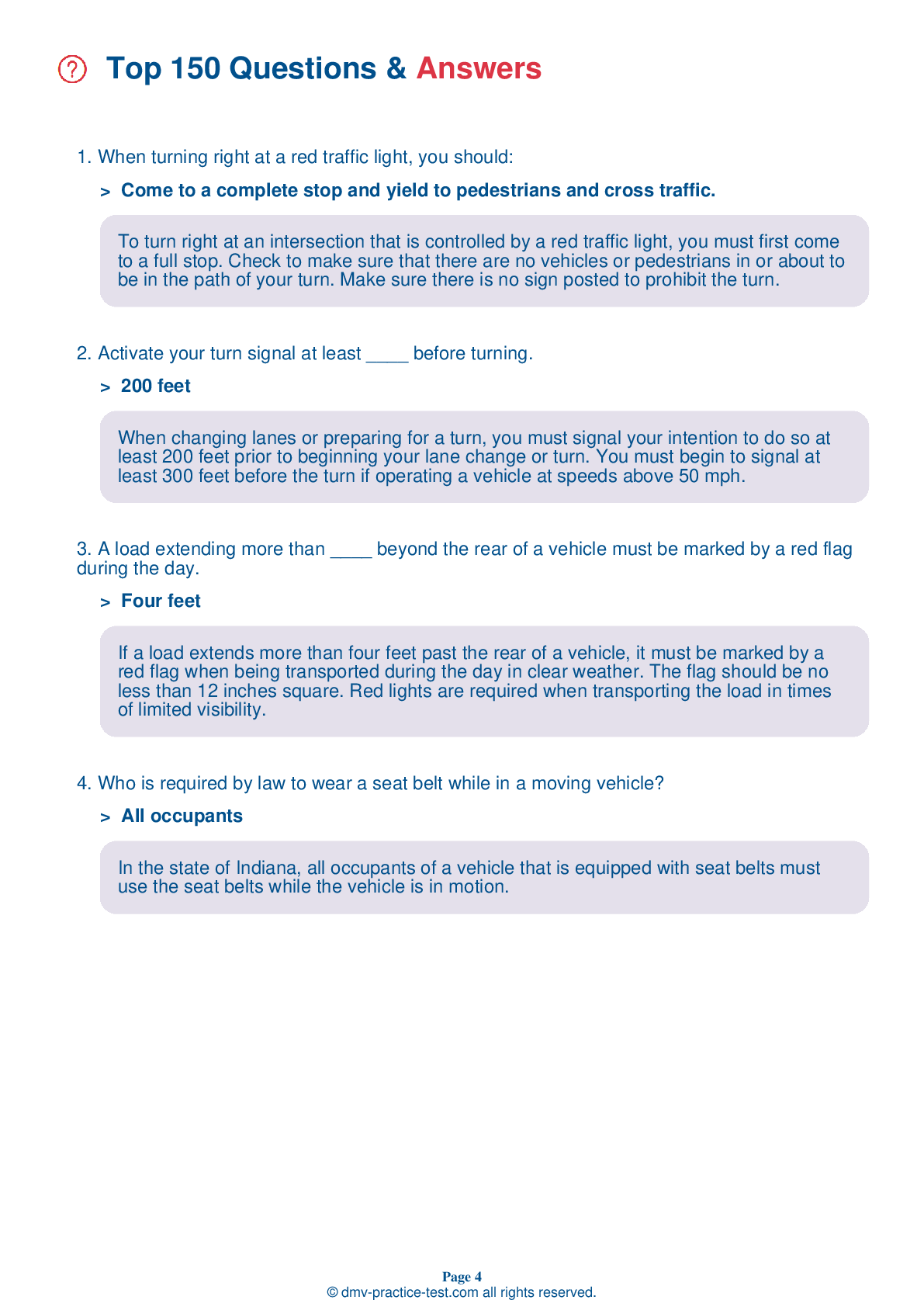FREE Indiana DMV Practice Test #13 Page 2 of 5
This set of Indiana DMV practise tests has been updated for January 2025. It includes questions based on the Indiana Driver Handbook's most significant traffic signals and laws for 2025. Use actual questions that are very similar (often identical!) to the DMV driving permit test and driver's licence exam to study for the DMV driving permit test and driver's licence exam.
On the practise exam, each question gets a tip and explanation to help you remember the concepts. The written component of the official Indiana DMV test will include questions about traffic rules, traffic signs, and driving statutes, as well as information from the Driver Handbook.
To obtain a passing grade, you must correctly answer 44 of the 50 questions. Take our DMV practise exam to help you prepare for your Indiana instruction permit or driver's licence.
The DMV exam is available in several languages.
Using any kind of testing assistance will result in an automatic fail, and the DMV may take additional action against your driver's licence, so stay away from it.
9 . When dealing with pedestrians, a driver must:
You must do everything you can to prevent striking a pedestrian or another vehicle, regardless of the circumstances. It is the driver’s basic responsibility to be alert to pedestrians and to yield the right-of-way to all pedestrians, even if the pedestrian is crossing the street where they should not be.
10 . What should you do if your accelerator sticks while you are driving?
If your accelerator sticks while you are driving, keep your eyes on the road. Quickly shift the vehicle into neutral and apply steady pressure on the brake pedal. Pull off the road when it is safe to do so and turn off the engine.
11 . When a stop is required at an intersection and no markings appear to indicate a stop line or crosswalk, a driver:
If there is no stop line or crosswalk, you should stop at the point nearest to the intersecting roadway where you can get a view of approaching traffic. You should not enter the intersecting roadway to gain a better view.
12 . Driving without liability insurance:
Drivers are required to have proper liability insurance when operating a motor vehicle. The state minimum requires drivers to have a minimum of $25,000 of coverage for the injury or death of one individual, $50,000 of coverage for the injury or death of two individuals, and $25,000 of coverage for property damage. This insurance is also known as 25/50/10 liability insurance.
13 . This sign means:

This sign indicates that there is merging traffic entering from the right.
14 . This sign means:

Regulation signs regulate traffic speed and movement, displaying rules which drivers must obey. This regulation sign indicates that parking is not permitted.
15 . What is the first thing you should adjust, if needed, when you get into a car to drive?
When preparing to drive, you should first adjust your seat to ensure that you are in a comfortable position and can see the road clearly. Adjust your mirrors and steering wheel to be effective when your seat is fully adjusted.
16 . From top to bottom, the following is the proper order for traffic lights:

On a traffic signal arranged vertically, red is always on top and green on the bottom. When arranged horizontally, red is always on the left and green on the right.
See the exact questions that will be on the 2025 Indiana DMV exam.
99.2% of people who use the cheat sheet pass the FIRST TIME
LT gives us an insight on how the cheat sheet provided her with all the study questions she needed before taking her test.
Joe initially studied with the handbook and failed his test, he eventually found us online, studied and pass his test the first time around.



